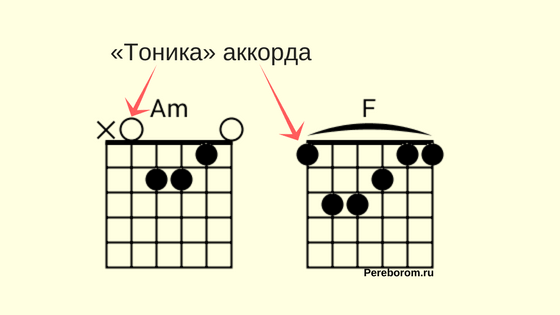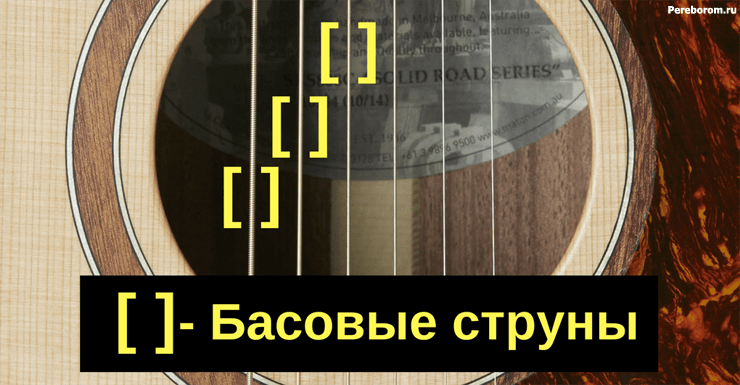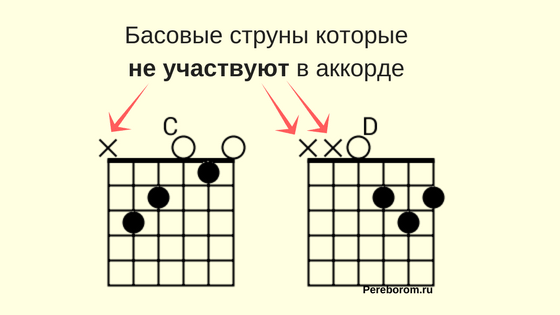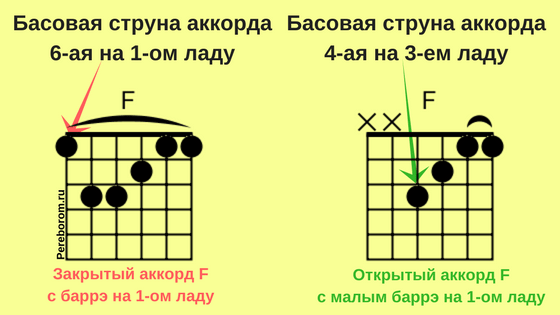
Bass strings on a guitar. Table with the designation of bass strings for chords
Contents

Bass strings on a guitar – what is it
bass strings – These are the lower thick strings on the guitar that are used when playing. Most often they are 4,5 and 6. Very rarely, the bass can be played on the third. Due to their braid (which is absent from the upper ones – 1,2) and thickness, they create a special dense and powerful sound.
Bass in chords
Most often, the so-called “tonic” acts as a bass. This is the main “fundamental” sound from which all harmony is built. For example, for Am it will be A (open 5), and for Fm it will be F (1 fret on the 6th string). Thanks to their loud low sound, they allow the “fragile” triad to build up the necessary “meat” and sound full and solid. The bass of the chord is the foundation of all harmony. Bass strings are especially important for chords when plucking, when each sound is “felt” separately.


Table with the designation of the group of bass strings
Below is a table detailing the tonics of the most popular triads and seventh chords. What is also important, it indicates those basses that should not be extracted in each case.
| chords | bass string, which is played in a chord (Tonic) | Bass strings that are not part of the chord |
| To: C, C7 Cm, Cm7 | 5 | 6 |
| Re: D, D7, Dm, Dm7 | 4 | 5 and 6 |
| We: E, E7, Em, Em7 | 6 | no |
| Fa: F, F7, Fm, Fm7 | 6 | no |
| Salt: G, G7, Gm, Gm7 | 6 | no |
| At: A, A7, Am, Am7 | 5 | 6 |
| Si: B, B7, Bm, Bm7 | 5 | 6 |
Strings That Shouldn’t Play Some Chords
On execution arpeggio on guitars It is important to remember that certain strings sound for certain chords. But there are also unnecessary, superfluous sounds that should not be extracted.

The easiest way see why it’s so important just by playing the wrong note. For example, in C (C major), hit the bass E (open 6). Immediately there will be a feeling of dirt, “clumsiness”, incorrect performance – disharmony.
Such an incorrect sound is obtained because some notes are simply not part of the chord being played. Each harmony consists of certain notes, which we play. If the note is not included in their number, then the purity of the sound is violated.
Bass strings when fingered

Sharp and flat chords

Bass strings in barre chords
Sometimes it is difficult for a beginner to take any chord from the barre. Here they come to help open chords. But it is worth remembering that with a different picking option, the bass strings on the guitar may also change. Let’s take a simple Dm chord as an example. If you take it in an open position (from the first fret), then we use the note “re” (open fourth) as the bass. If we move it to the fifth position and take it from the barre, then the bass will already be on the 5th string of the 5th fret.

The reverse is when the closed chord is played in open position. F major (F) – respectively bass – 1 fret 6 strings. But it is difficult for beginners to play the barre, so there is an interesting variant of taking F with a small barre, which is much easier to set than a triad with a full barre. In this case, the bass moves to the 4th string, 3rd fret. It is worth noting that open strings in this variant it is necessary to jam.

Exercises

The game is a simple thieves fight

The game of busting “four”

Brute game “Eight”

More Chord Examples for Playing Exercises
Here are other examples of chords that can be played using the diagrams above.
- C – F – G — С
- E — A — B7 — A — E — A — B7 — E
- D — A — G — D
- D — A — C — G
- G — C — Em — D
- Dm — F — C — G
- D — G — Bm — A
- Am — F — C — G
- Am — C — Dm — G





